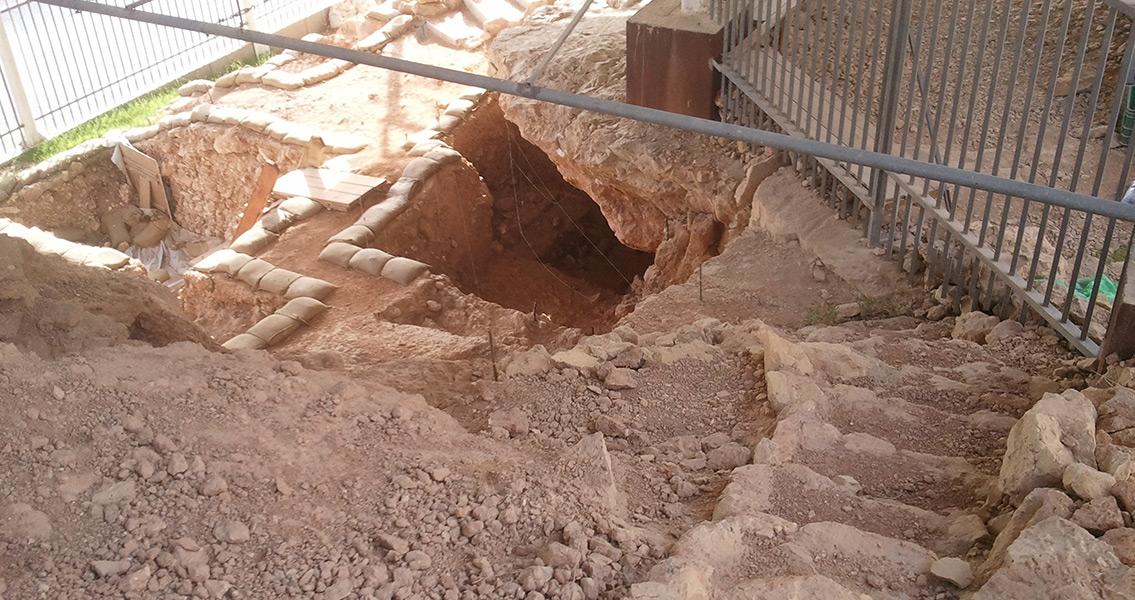<![CDATA[Early humans had a taste for tortoise, according to a new study published in the journal Quaternary Science Reviews. The discovery, made at the Qesem Cave near Tel Aviv, Israel, has the potential to dramatically change our assumptions about the diet of Lower Paleolithic early humans. Turtles and tortoises are rarely consumed today, with many species of the animals endangered as a result of extensive hunting by humans, and their low breeding rates which make it hard for their populations to recover following the loss of males at breeding age. Nevertheless, the meat is still consumed in some parts of the world, particularly in the countries of South East Asia, where turtle soup is regarded as a delicacy. Qesem Cave is located 12km east of Tel Aviv, in a region of hilly limestone terrain roughly 90 m above sea level. A major part of the cave’s stratigraphic sequence was revealed in the year 2000, after road construction works destroyed the cave’s ceiling. It is believed that human occupation of the cave began sometime before 382,000 years ago, and continued until around 200,000 years ago. Researchers from Tel Aviv University, in collaboration with scholars from universities in Germany and Spain, have discovered evidence of tortoise remains at the site, suggesting early humans took to eating tortoises alongside the large game and vegetable material considered to have made up most of their diet. Led by Dr. Ruth Blasco of the Centro Nacional de Investigacion Sobre la Evolucion Humana (CENIEH), Spain, and Tel Aviv University’s Institute of Archaeology, together with Prof. Ran Barkai and Prof. Avi Gopher of TAU’s Department of Archaeology and Ancient Near Eastern Civilizations; the study provides insights into the surprisingly broad diet of early humans, and their mastery of the tools necessary to prepare tortoise. “Until now, it was believed that Paleolithic humans hunted and ate mostly large game and vegetal material”, said Prof. Barkai in a press release. “Our discovery adds a really rich human dimension — a culinary and therefore cultural depth to what we already know about these people.” The tortoise specimens are particularly interesting as they open a window onto the surprisingly modern methods these Paleolithic humans used to prepare their food. “According to the marks (on the specimens), most of the turtles were roasted in the shell,” Prof. Barkai explained. “In other cases, their shells were broken and then butchered using flint tools. The humans clearly used fire to roast the turtles. Of course they were focused on larger game, but they also used supplementary sources of food — tortoises — which were in the vicinity.” Significantly, the tortoises were found at different levels throughout the cave, suggesting that they had been a part of the inhabitants’ diet for the entirety of the 200,000 or so years the cave was inhabited. How early human diets developed is an issue currently under reexamination. Until recently, it was believed that they had a diet made up mostly of large game such as deer, horse and cattle: fatty meats which gave these early hunter-gatherers the calories they needed to survive. The diversification into a diet which included vegetables and smaller animals was believed to have been a development in later Homo sapiens, but the evidence found at Qesem cave suggests that the early human diet was in fact much more diverse than previously thought. “We know by the dental evidence we discovered earlier that the Qesem inhabitants ate vegetal food,” said Prof. Barkai. “Now we can say they also ate tortoises, which were collected, butchered and roasted, even though they don’t provide as many calories as fallow deer, for example.” Why these early humans elected to eat tortoises, an animal which offers significantly fewer calories, remains a mystery, but the team have some theories, as Dr Blasco explained in the press release. “In some cases in history, we know that slow-moving animals like tortoises were used as a ‘preserved’ or ‘canned’ food. Maybe the inhabitants of Qesem were simply maximizing their local resources. In any case, this discovery adds an important new dimension to the knowhow, capabilities and perhaps taste preferences of these people.” For more information: www.sciencedirect.com Image courtesy of Wikimedia Commons user: 66AVI]]>
Early Humans Had a Taste for Tortoises
